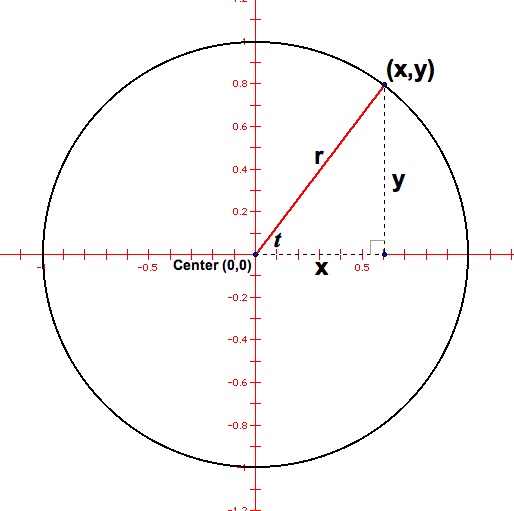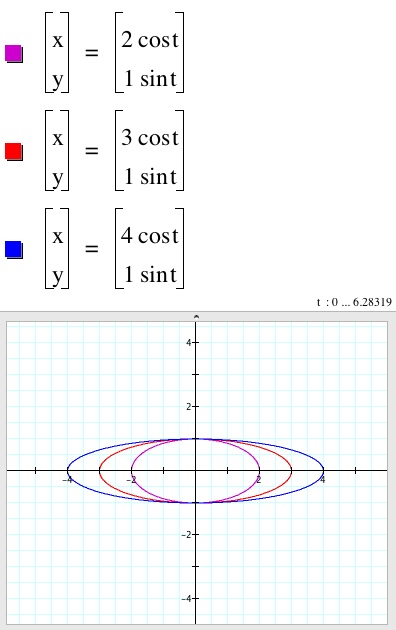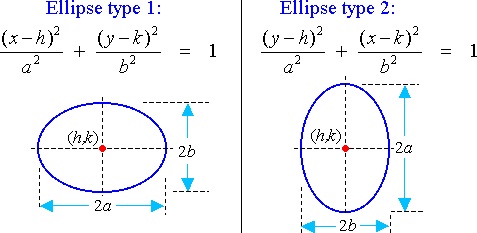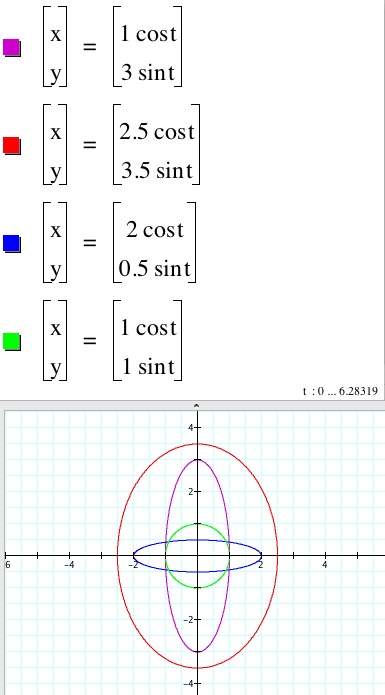

Parametric Equations
by
Rob Walsh
We are interested in the graphs of sets of parametric equations involving trig functions sine and cosine. First, let's consider the simplest form:

x = cos(t)
y = sin(t)
0 < t < 2pi
It is no surprise that our graph is a circle. Our value t represents circular movement around a center and our leading coefficients (in this case, it is 1 for both) represent our distance from this center at a given time. We know that we rotate around the circle exactly one time, because t is bounded between 0 and 2pi, the measure of one rotation around a circle.
Now, let's specifically define x and y by including a general measure for our distance to the circle from the center.

x = rcos(t)
y = rsin(t)
0 < t < 2pi
There are some minimally interesting ideas inherent here. We see how the circle is really a collection of coordinate points (x, y) equidistant from some central location - in this case, (0, 0). These coordinates are determined by the circle's radius, which happens to be our leading coefficient and our parameter t, the rotational distance around our center. It is even clear how Pythagoras' formula plays its role in determining our coordinates. see GSP sketch for more. Let's see how else we can use Pythagoras:
x2 + y2 = r2
(rcos(t))2 + (rsin(t))2 = r2
r2cos(t)2 + r2sin(t)2 = r2
r2(cos(t)2 + sin(t)2) = r2
cos(t)2 + sin(t)2 = 1
In the above graph, our radius is already 1, so this equation does not surprise us. However, now we have shown that it works now matter what the radius is!
What may also be interesting would be to observe what happens when our values for r differ from one another between parametric pieces. Let's consider the parametric equations:
x = acos(t)
y = bsin(t)
a, b are real numbers


In both cases, we have either fixed r = a or fixed r = b. We find that as r = a moves, our circle becomes an ellipse with a horizontal stretch. Similarly, as r = b moves, our circle becomes an ellipse with a vertical stretch. In each case, a and b represent half of each major and minor axes for each ellipse and also appear in the standard equation of an ellipse that we know to be:

http://www.teacherschoice.com.au/images/ellipse_types.gif
Note that the h and k values represent the coordinates of the ellipse center. In our examples above, we are centered at the origin, so these are not specifically in our equations. This is beyond the scope of my exploration, but we should mention it.
Okay, one last graph to illustrate the differences between our circle, a horizontal ellipse and a vertical ellipse.
